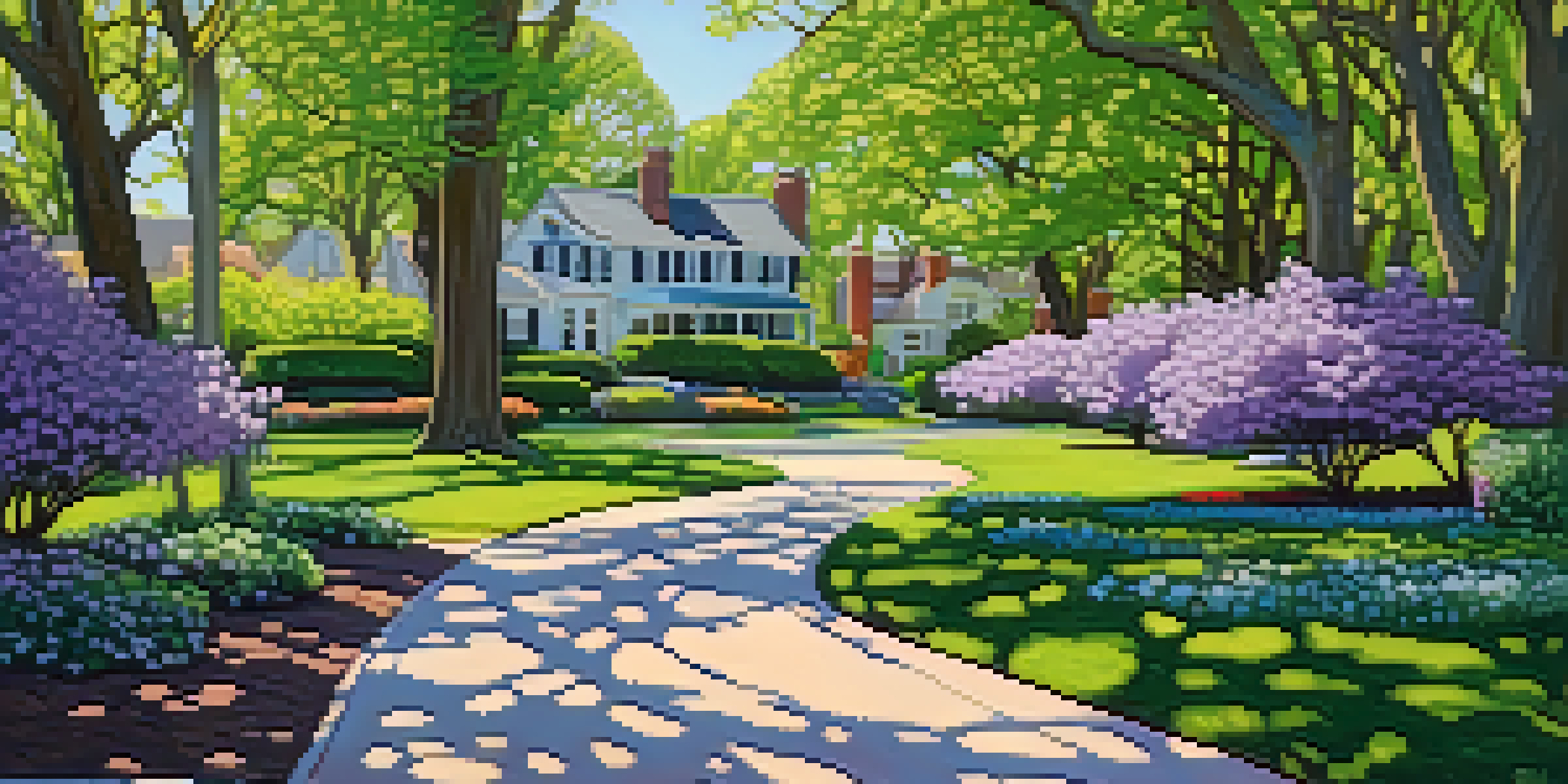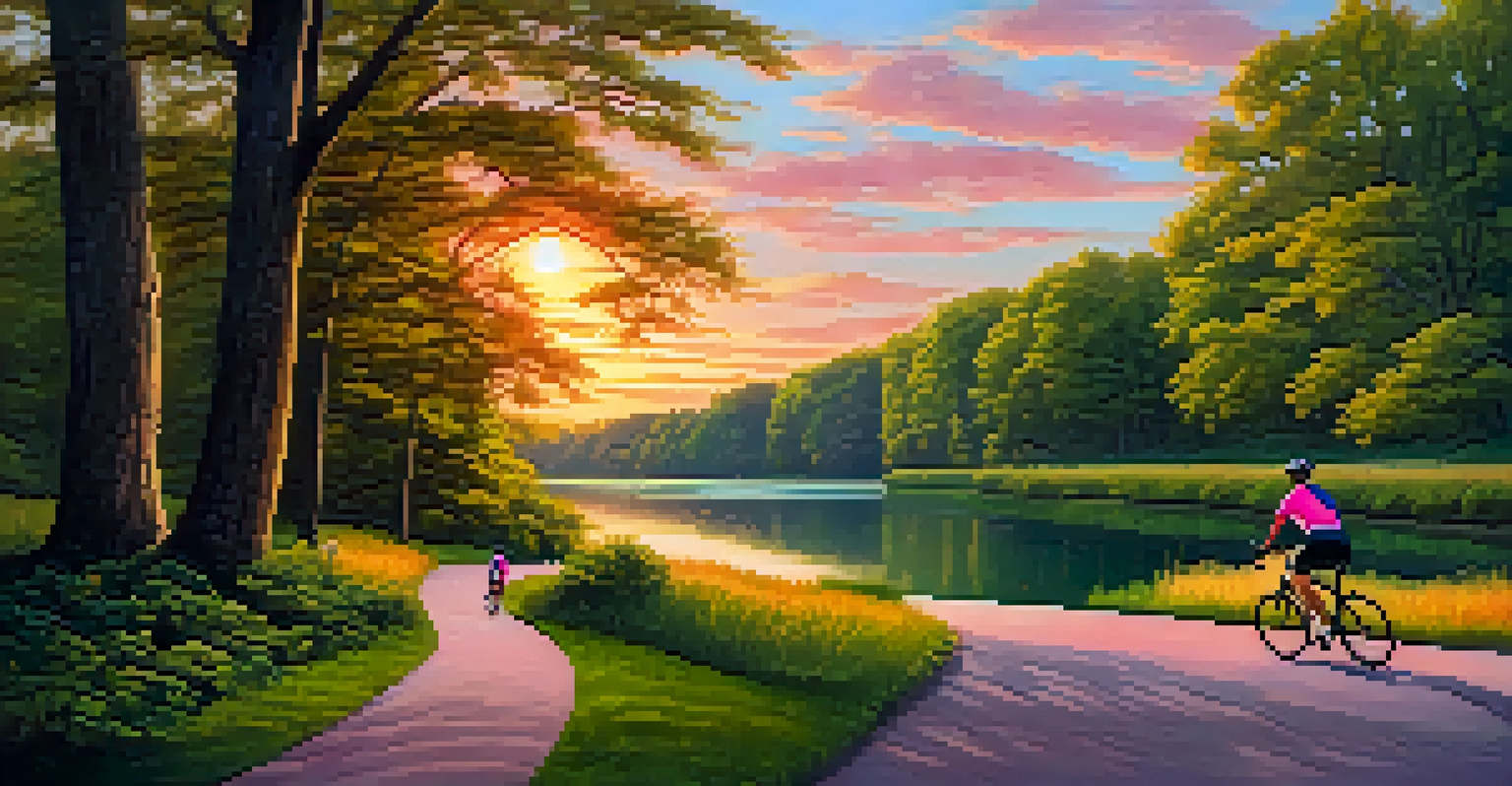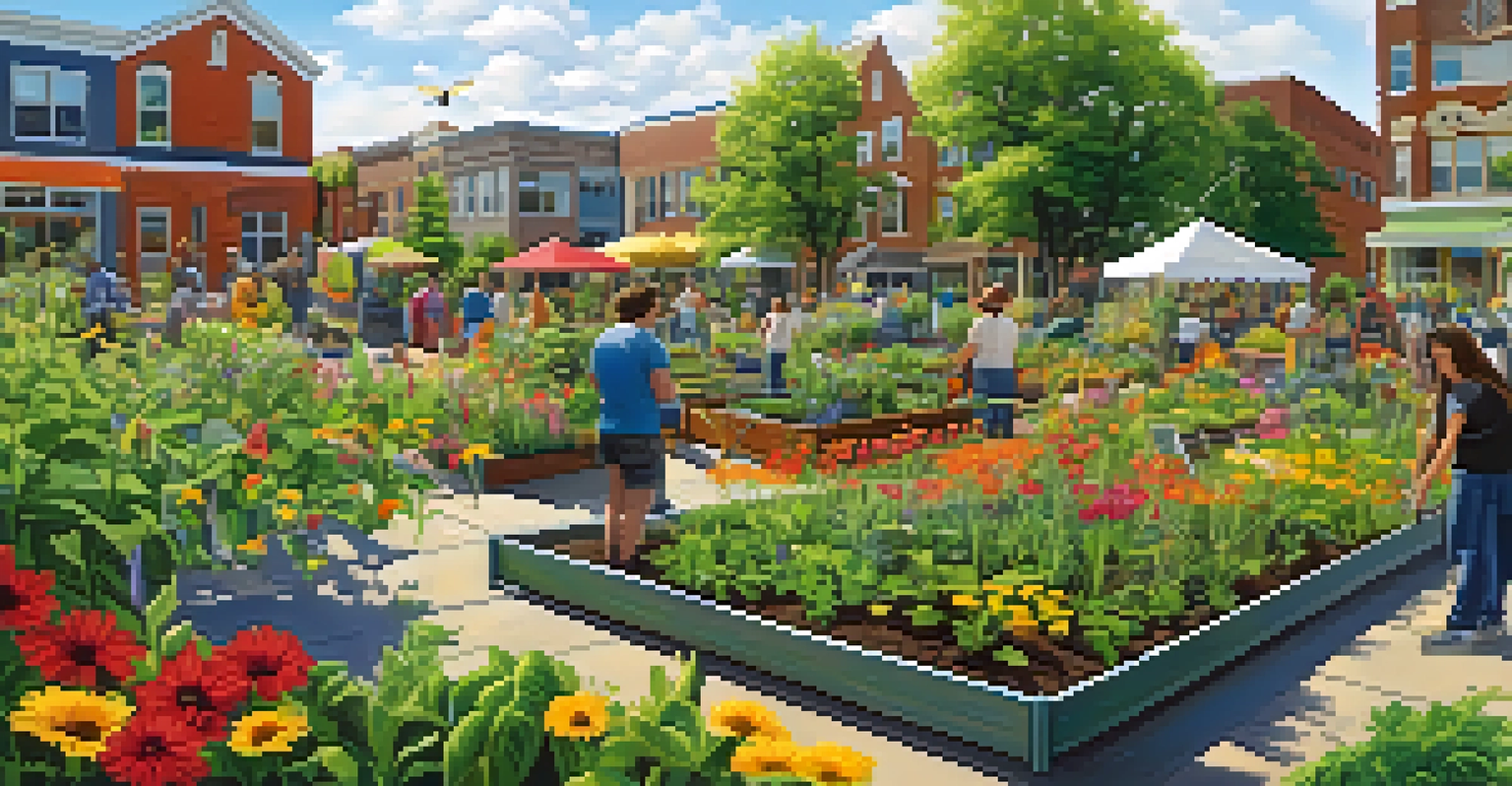Rochester's Urban Green Spaces: Benefits and Initiatives

The Importance of Urban Green Spaces in Rochester
Urban green spaces are vital for city living, offering a breath of fresh air amidst the hustle and bustle. In Rochester, these areas not only beautify the landscape but also provide essential benefits to residents' physical and mental health. Think of them as the lungs of the city, filtering air and serving as a refuge for both people and wildlife.
Green spaces are not just a luxury; they are a necessity for the health and well-being of urban populations.
Moreover, green spaces foster community connections. Parks and gardens become gathering spots where neighbors can meet, socialize, and engage in activities together. This sense of community can significantly enhance the quality of life, creating bonds that strengthen the fabric of urban life.
As cities like Rochester continue to grow, the need for accessible green areas becomes even more apparent. They promote sustainability and biodiversity while helping mitigate urban heat effects. Essentially, these spaces help maintain a balance in our urban ecosystems.
Health Benefits of Green Spaces for Rochester Residents
Spending time in green spaces can have transformative effects on physical health. Research shows that access to parks encourages people to engage in outdoor activities like walking, jogging, or playing sports, which can lead to improved fitness levels. In Rochester, local parks provide the perfect backdrop for these healthy pursuits.

Mental health also sees a significant boost from regular interaction with nature. Studies suggest that even short walks in green spaces can reduce stress and anxiety, offering a peaceful retreat from daily pressures. For many Rochester residents, a stroll through Highland Park can be a simple yet effective way to unwind.
Green Spaces Boost Health
Access to urban green spaces in Rochester enhances residents' physical and mental well-being.
Furthermore, green spaces can enhance community health by reducing pollution levels and promoting cleaner air. As more people choose to spend time outdoors, the collective push towards a healthier lifestyle can lead to a more vibrant, healthier Rochester overall.
Community Engagement in Rochester's Green Space Initiatives
Community involvement is crucial for the success of green space initiatives in Rochester. Local organizations and volunteers often come together to plant trees, maintain gardens, and organize events that promote the use of these areas. This grassroots involvement not only beautifies the city but also fosters a sense of ownership and pride among residents.
Parks are essential to a healthy community. They provide a place for people to connect, engage, and rejuvenate.
One notable initiative is the 'Adopt-a-Park' program, where community members are encouraged to take responsibility for the upkeep of their local parks. By engaging citizens in this way, the city ensures that green spaces are well-maintained and reflect the needs of the community. It’s a win-win situation that empowers residents while enhancing their environment.
Through these efforts, residents form connections, share knowledge, and create lasting friendships. Community engagement in green spaces serves as a reminder that we all play a role in shaping our environment and that together, we can cultivate a healthier and more beautiful Rochester.
Sustainability Practices in Rochester's Urban Green Spaces
Sustainability is at the heart of Rochester's approach to managing urban green spaces. The city is committed to incorporating eco-friendly practices that minimize environmental impact while maximizing benefits. For example, the use of native plants in landscaping not only supports local wildlife but also reduces the need for water and maintenance.
Rain gardens and green roofs are becoming increasingly popular as sustainable solutions to manage stormwater runoff. These innovative designs help filter pollutants and reduce flooding, showcasing how green spaces can enhance urban infrastructure. Rochester's commitment to sustainability ensures that these spaces remain functional and beneficial for generations to come.
Community Drives Green Initiatives
Local engagement in green space projects fosters community pride and ownership in Rochester.
By promoting sustainable practices, Rochester not only addresses current environmental challenges but also sets an example for other cities. The ongoing efforts to create greener, more resilient urban spaces illustrate how cities can adapt to climate change while enhancing the quality of life for their residents.
Key Green Spaces to Explore in Rochester
Rochester boasts a variety of urban green spaces, each with its unique charm and offerings. Highland Park, known for its beautiful gardens and vibrant annual Lilac Festival, serves as a popular destination for both locals and visitors alike. With its sprawling lawns and scenic walking paths, it’s a perfect spot for relaxation and recreation.
Another gem is the Genesee Riverway Trail, which offers stunning views of the river and a network of paths for biking, running, and walking. Connecting various parks and neighborhoods, this trail promotes an active lifestyle while encouraging exploration of the city’s natural beauty. It’s a great example of how urban planning can integrate nature and community.
For those interested in more tranquil settings, the Rochester Botanical Gardens provides a serene atmosphere filled with diverse plant collections. This space not only educates visitors about horticulture but also emphasizes the importance of preserving natural ecosystems. Exploring these green spaces contributes to a deeper appreciation of Rochester's natural heritage.
Future Initiatives for Expanding Rochester's Green Spaces
Rochester's commitment to enhancing its urban green spaces doesn't stop here. Several future initiatives aim to expand and improve these areas, making them more accessible and enjoyable for everyone. Plans include the development of additional parks in underserved neighborhoods and the enhancement of existing ones with new amenities.
Moreover, the city is exploring innovative partnerships with local businesses and nonprofits to fund and support these initiatives. Collaborative efforts can lead to unique projects, such as community gardens and outdoor classrooms, which engage residents while promoting sustainability and education. These partnerships are essential for creating a lasting impact.
Sustainable Practices Matter
Rochester's commitment to sustainability in its green spaces ensures environmental benefits for future generations.
As Rochester looks to the future, the focus remains on building a greener, more inclusive city. By investing in urban green spaces, the city not only prioritizes public health and well-being but also fosters a stronger sense of community. The journey towards an even greener Rochester is just beginning, and residents are encouraged to be a part of it.
The Role of Technology in Enhancing Green Spaces
Technology plays an increasingly important role in the management and enhancement of urban green spaces. In Rochester, innovative tools such as GIS (Geographic Information Systems) help city planners assess green space distribution and identify areas needing improvement. This data-driven approach ensures that resources are allocated effectively to meet community needs.
Additionally, apps and online platforms are being developed to encourage public engagement with local parks. These tools allow residents to provide feedback, report maintenance issues, and learn about upcoming events and activities in their green spaces. By leveraging technology, Rochester is making it easier for residents to connect with their environment.

Looking ahead, the integration of smart technologies, such as sensors for monitoring soil health and climate conditions, could further enhance the management of green spaces. These advancements will not only help sustain the health of the parks but also provide valuable insights into how urban ecosystems function. Technology, when used thoughtfully, can significantly benefit Rochester's urban green spaces.